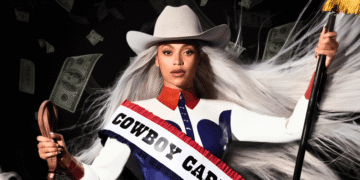Held on May 18, the fifth edition of Good Old Days—led by TMP Industries and Season Pass PH—brought together the country’s vintage scene, not just to look back, but to lay out what comes next.
What started as a niche thrift market has quietly turned into one of the most culturally aware gatherings in the Metro. Part marketplace, part live session, part creative gathering—GOD 5 felt less like a curated event and more like a scene declaring itself.
With vendors who’ve been here since day one, musicians who understand their references, and a crowd that showed up knowing exactly what this was, GOD 5 made one thing clear: the past is not a trend. It’s the foundation.
Vintage Isn’t a Trend. It’s a Language.
For organizers Douglas Brocklehurst, Lean Torres, and Red Madiaga, the core idea behind GOD 5 wasn’t just nostalgia—it was recognition.
“We wanted to spotlight how much of today’s style and creativity comes from what came before,” said Torres. “A lot of past creative movements in the Philippines never got their flowers. This was a chance to give them that.”
Brocklehurst added that what we call “vintage” today isn’t making a comeback—it never really left. “It naturally evolved into how people express themselves now.”
Madiaga summed it up best: “Culture runs in cycles. GOD is where those cycles show up and talk to each other.”
GOD 5: A Stage for Every Generation

The musical lineup wasn’t just entertainment—it was an extension of the event’s message. From rising voices to scene staples, each act represented a different layer of the culture GOD 5 was built to spotlight.
Migswell’s set stood out as a full-circle moment. Once just another face in the crowd, now a featured performer, his presence was proof of what long-term community-building can look like. “When you see people grow with the event, it makes everything worth it,” said Red Madiaga.
Jikamarie brought in her own wave of raw, melodic energy—bridging alternative pop with intimate storytelling that resonated deeply with the crowd. Her performance added an emotional texture to the day, grounding the high-energy atmosphere in something more reflective.
SHNTI came in with edge and precision. A standout voice in the current hip-hop scene, her set was sharp, self-assured, and deeply rooted in her point of view. She didn’t just ride the beat—she commanded it, giving the audience one of the most memorable performances of the event.
Waiian brought grit and weight to the stage. Known for his sharp lyricism and no-frills delivery, his set added raw energy that balanced the more melodic acts and anchored the day in real, grounded storytelling.
Sica delivered a smooth and confident set that sat comfortably at the intersection of R&B, hip-hop, and alternative. His performance brought a laid-back intensity—something that didn’t try to overpower the room, but pulled the crowd in with precision.
And then there was Kartell’em—veterans of the scene, but never on autopilot. Their set wasn’t just a throwback; it was proof that longevity and relevance can go hand in hand. Still sharp. Still pushing. Still showing the next wave how it’s done.
Together, Migswell, Jikamarie, SHNTI, Sica, Waiian and Kartell’em didn’t just represent different stages of the culture—they showed why it’s still moving, still relevant, and still very much in the hands of the people shaping it.
A Market With Memory: Where Sellers Shaped More Than Style
The vendor lineup at Good Old Days 5 wasn’t curated for hype—it was shaped by people who’ve helped define the event since day one. Many of the sellers weren’t just participating—they were part of the reason GOD has grown into what it is.
“A lot of the sellers have been with Good Old Days since the early runs, so there’s already a deep community bond,” said Madiaga.
More than just displaying clothes, these sellers brought lived experience. Their pieces carried weight not just because they were rare or vintage, but because they reflected years of taste-building and scene awareness.
“We wanted to spotlight people who live and breathe vintage culture—those with a real point of view, not just stuff to sell,” added Torres.
That mindset created a vendor floor that felt intentional, not trend-driven. Whether it was a standout find or a quick convo between buyer and seller, everything in the room reflected the idea that vintage isn’t just about the past—it’s about perspective.
A Crowd That Showed Up With Purpose

The response to Good Old Days 5 was clear from the start: people came in ready, and they stayed engaged.
“The response was overwhelmingly positive and more intentional,” said the team.
This time, the nostalgic vibe didn’t need explaining—it clicked. According to the organizers, the community connected more deeply with the direction GOD 5 took.
“The team observed that a more streamlined and focused approach resonated more deeply with the event’s message.”
It also marked the event’s biggest turnout to date. But more than the numbers, it was about the impact. The kind of engagement that doesn’t end when the lights go off.
“Attendees left with lasting memories—signaling mission success for both TMP and Season Pass.”
Beyond Nostalgia
For the organizers, Good Old Days has never been about looking back for the sake of it. It’s always been about movement—about passing the torch without dimming the light.
It’s a space where younger creatives can build on what came before, and where those who shaped the scene early on still have room to evolve.
“We’re not just reflecting culture,” said Dougbrock. “We’re creating space for it to grow—with context.”
That balance—between past and present, reverence and reinvention—is what gave GOD 5 its weight. It didn’t ask the culture to freeze in time. It gave it somewhere to go. And if that’s the future of Filipino creative spaces, then the next Good Old Days isn’t just worth attending. It’s worth showing up for.












